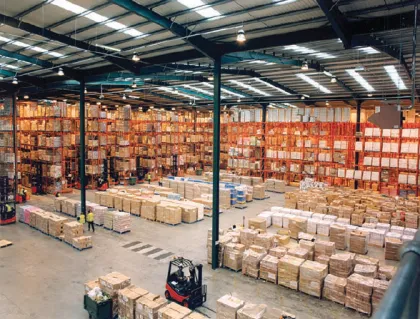
Why China's supply chain will set the next-gen standard
Will China be able to leapfrog more established markets to develop the next generation of supply chain solutions? Darren Smillie, Customer Supply Chain Insight manager, IGD, investigates.
Almost every number you hear about China is mind boggling and its retail market is no exception. For example, China’s Singles Day (November 11) is the largest online sales event in the world, hitting US$14.3 billion last year and dwarfing Cyber Monday or Black Friday in the West. In fact, the numbers for China are often literally off the scale. By 2020, its online grocery market — already the largest in the world — is forecast to be 60% bigger than the rest of the top 10 markets in the world combined!
But it is not just the sheer size of the market which sets China apart — which is perhaps not altogether unexpected given its enormous population — it is also, increasingly, its level of sophistication. According to KPMG’s Global Mobile Banking Report 2015, China is not only the market with the greatest number of mobile banking users, but also the market with the highest penetration of mobile banking, with more than 60%-70% of the population engaged — almost twice the penetration rates we typically see in Europe.
A supply chain for the future
So we have huge volumes, innovative solutions and empowered consumers. To continue to satisfy these unprecedented and growing demands in the future, China needs a world leading supply chain. Yet the current picture is complex, with cutting-edge solutions such as drone deliveries existing alongside a highly fragmented, non-standardised and disparate array of processes, solutions and providers lacking the coordination, scale and awareness to drive end-to-end efficiencies and opportunities for growth.
Despite this, and in fact partly because of this, China nds itself in a unique position to be able to leapfrog more established markets and develop the next generation of supply chain solutions — responsive, resilient and inter-connected. Here is why I think China’s supply chain is ready to awaken and shake the world:
1 Lack of legacy
Although developed markets currently have far more standardisation in terms of pallets, vehicles and equipment, which help to drive eciencies and improve ow, in many cases their supply chains were developed for a world which no longer exists. Networks and processes to service big box retailing are now being retrofitted with costly and complex solutions to meet the demands of a multi-channel work driven by convenience for consumers.
China has a much cleaner slate, without being as tied in to heavily capitalised assets and automated solutions as in the West. It has the opportunity to develop new, agile solutions from scratch which meet the needs of consumers, particularly in its many mega-cities, focusing on convenience and online. is is where innovations will emerge.
A good analogy is to compare the modern, air-conditioned and carriage less subway systems of the Far East with those in places such as London. Being rst movers (no pun intended) gave London the lead for a long time, but now the dependency on keeping the system up and running to service millions of commuters each day makes it almost impossible to simultaneously make transformational improvements. is leads to incremental and slow progress.
That is why the solutions that China develops for its supply chains should not just replicate the current global “best in class”, locking itself into the same cycle of leadership and inevitable legacy, but also take a radically different approach. The aim should be to ensure responsiveness despite whatever the future may hold, for example, applying some of the ideas and principles of the physical Internet, which faces signicant barriers in less agile markets, to standardisation and the movement of goods.
2 Ambition and ability
Besides the opportunity to develop innovative solutions, China also has the ambition and motivation for change. The World Economic Forum’s 2013 report, Enabling Trade: Valuing Growth Opportunities, identied that removing supply chain barriers can have a significant impact on the global economy. Improving border administration and transport and communications infrastructure halfway towards global best practice in every market would grow global GDP by almost 5%. at is why developing supply chains should not just be a priority for individual businesses but for governments and nations as well.
With the threat of a slowdown in the Chinese economy and the current maturity of its supply chain, there is a huge opportunity to be seized. The government has also set additional motivation, with targets for reducing carbon emissions and investing in infrastructure featuring prominently in recent five-year plans.
While China has the ability to move very rapidly with legislation, it is important to bring along all of the many individual players in this fragmented market on the journey to support growth for all, so other forms of incentivisation will be important.
Unlike some fast developing markets which are hostile to external ideas, China is very open to learning from international best practice. However, the principles need to be understood so that the solution can be adapted to work in this unique market. e 2014 China Innovation Survey by PwC found that 38% of multinational companies operating in China rated Chinese companies as more innovative than themselves in supply chain (versus 27% rating themselves as more innovative). That spirit of innovation, allied to greater coordination and standardisation, can unleash transformational change.
Seizing the opportunity
Significant challenges remain, with fragmentation meaning no individual companies will have the scale to disrupt the market alone, and the journey ahead will not be easy, requiring coordinated and collaborative efforts. But as Sun Tzu said, “in the midst of chaos, there is also opportunity”.



















 Advertise
Advertise

